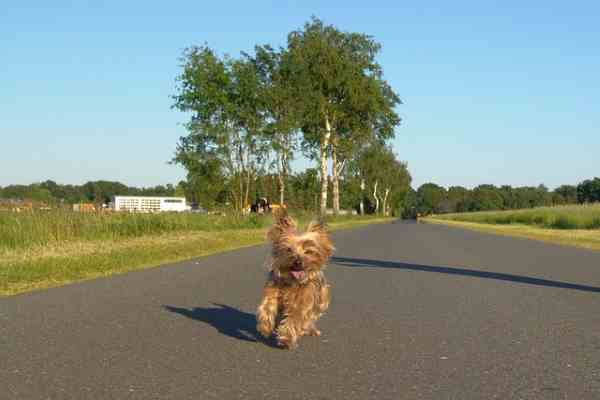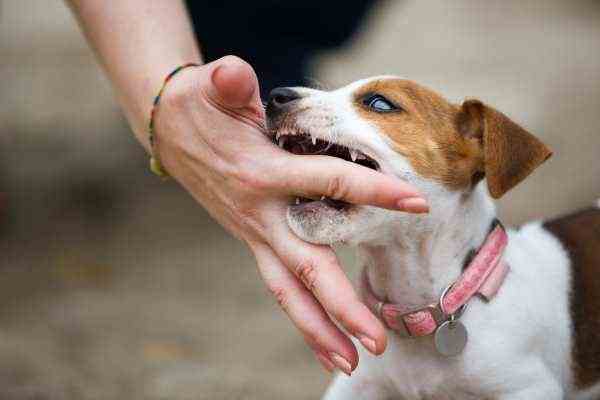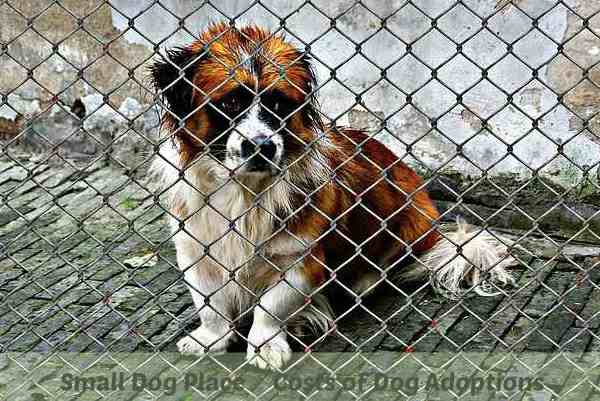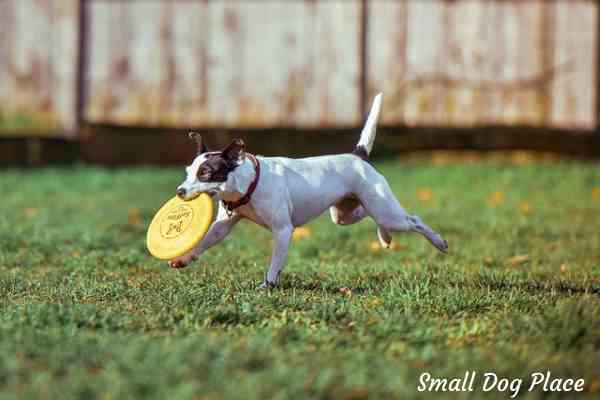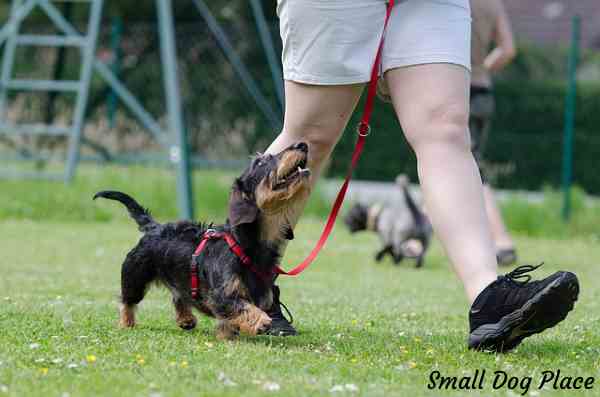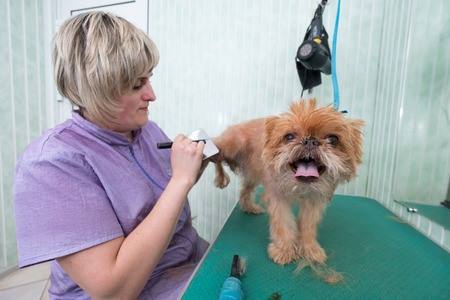- Small Dog Place Home
- Development Stages
- Adolescence
Surviving Dog Adolescence
By Janice Jones |Last Updated December 15, 2020
Dog Adolescence is a life stage that all puppies and human children must pass through on their way to adulthood.
Certain behaviors accompany this stage such as the testing of boundaries and the need for more independence. Sounds very similar to the human adolescent phase, doesn’t it? Well, in many ways it is the same.
Dog Adolescence Time Frame
Sometime between the ages of four and seven months of age, in a small breed dog, a perfectly obedient puppy becomes impossible, almost overnight. Just when you feel you’ve accomplished and graduated from puppy kindergarten classes, your angel grows devil horns.
Each breed is slightly different, but normally dogs go through their “teen years” somewhere between 6 and 18 months. Small breeds mature quickly, whereas larger breeds do not reach maturity before 18 months of age.
Keep in mind that adolescence is a developmental stage that will pass. It does, however, requires patience and understanding on our part. Even the most patient of doggie parents can find themselves frustrated by some of the unexpected behaviors that tend to emerge during this time.
What to Expect of Your Teenage Dog
Dog Adolescence can last from about six to 18 months depending on the breed of your dog, with small breed dogs going through the phase faster than large breeds.
Physical Maturity
Like human teens, the hormones tend to rule the brain during dog adolescence.
Boys
Boys begin to lift their legs when they urinate and if intact females are within shouting distance may show interest in mating. Marking with their urine on furniture is all part of the process. Not only will they begin to mark inside and out, but they may want to roam and may become aggressive with other males.
Humping is another one of those behaviors people find annoying. Humping you or other inanimate objects is a behavior that should be discouraged. Males will become sexually active any time after six to seven months of age. While technical capable of siring a litter, males normally do not reach full sexual maturity until 12 to 15 months.
The body of the intact adolescent male dog produces testosterone at a rate several times the adult level of this hormone. As a result, some male-oriented behaviors can become extreme at this stage of life.
Girls
Females become sexually mature and may also mark. Female dogs will experience their first estrus cycle sometime after six months of age. Though sexually mature, their bodies are not ready to experience a pregnancy, so mating should be postponed until at least the second cycle. If you are not planning to breed your dog, spaying her around six months of age will prevent further estrus cycles and all the sexual behaviors that accompany them.
Spaying or neutering will circumvent any sexual behaviors and keep your puppy from the frustration of raging hormones.
Behavioral Changes Observed During Dog Adolescence
During this period in a puppy’s life, everything seems just to fall apart. Your bright little puppy who sail through many basic commands now appears to forget everything he learned. It seems that the adolescent dog now must decide for himself if it suits him to follow through on the command.
Stubbornness and just plain forgetfulness seem to occupy part of the dog’s brain during his teenage years. Any of this sound remotely like human teenagers?
Independence
In human child development, you might have heard that the “terrible twos” is the first adolescence and then puberty marks the second. In the canine world, this is also true. Young puppies exploring the world for the first time will feel the thrill of independence. But like most human toddlers, puppies exploring their environment are not likely to stray too far from you.
During the “real” adolescence, new found independence means taking off in new directions and never looking back. The word “come” once mastered now sounds like a foreign term. The dog’s growing independence and insatiable need to explore can interfere with his memory of come. This can be a dangerous time for your puppy, especially if you live near a busy road.
Male dogs also have that urge to take off in search of a girl in heat. This is one more reason why you will want to arrange to have him neutered.
High Energy During Dog Adolescence
Very young puppies sleep much of their time. They tire easily and take more naps throughout the day. Adolescent dogs do not sleep as long and have more energy, even energy to spare. An energetic dog needs things to do, whether it is physical exercise or mental stimulation.
Small Dog Syndrome
Not your dog, NEVER! Unfortunately, it is about this time when a small pup enters dog adolescence, that behaviors associated with small dog syndrome emerge. Be sure to prevent them by sticking to your training and socialization routines.
Read more about Small Dog Syndrome
Training Issues
Basic manners fall by the wayside and house training is all but forgotten as the puppy enters the phase of adolescence. You thought your puppy understood those basic commands and earlier, he was great at demonstrating that understanding. Now, even simple ones such as sit, down, stay, and so forth have seemingly been forgotten.
Your almost perfectly housetrained puppy seems to have forgotten where he’s supposed to go and you begin to wonder if he’s doing it on purpose. You ask yourself, “how does this puppy just forget everything he’s learned?
Read more about Basic Commands
Biting During Dog Adolescence
Forget puppy nipping, your puppy is now snapping and even biting at you or someone else. Bite inhibition, which you were sure was under control, now surfaces biting being accompanied by stronger jaws and sharper teeth. This type of biting is not the mouthing that you were dealing with several months ago. Simple things that never seemed to bother him are now making him angry such as when you need to groom him.
He may be more aggressive with other dogs as well. He seems annoyed at best and downright mad for no apparent reason. If you have another dog in the home that wants to play, for example, is greeted with a snarl and a snap.
Digging, Barking, Begging, Oh My
Often, behaviors never observed before, develop during adolescence. You thought you had the perfect puppy when all of a sudden that flawless baby of yours tries out new behaviors that are less than ideal. Your reprimands become more common and frequent than ever before.
Food Aggression / Resource Guarding
When your puppy first aid solid food, he likely shared the bowl or plate with his littermates. There’s a good chance that he shared willingly with his siblings until he left the breeder’s home to come to you. Food aggression was not an issue and neither was resource guarding.
The term resource guarding refers to the practice of guarding his belongings or territory, often from you, another person, or other pets. Imagine your surprise if your mild-mannered dog growled at you showing all of his pearly whites when you tried to pick up a toy or bone. This is just another behavior that may emerge during adolescence.
Emotional Issues Encountered During Dog Adolescence
Your happy-go-lucky pooch shows signs of anxiety for the first time. Friendly dogs become fearful of new people and situations. Your puppy loved all the attention he received at the vet office until one day, he refused to go through the door.
Fears and Anxiety
Friendly pups may also go through a fear phase where they become frightened by things that didn’t seem to bother them in the past. The groomers or vet office visits become more difficult. A visit to a favorite park, a familiar farmer’s market, or best friend’s house is met with hesitation and reluctance to enter.
Around the age of six to nine months of age, a friendly pup may back away from a friendly stranger or begin barking at strangers.
Your pup is now starting to show fear around unfamiliar people and may end up displaying aggression around people who are unfamiliar to him.
Some situations seem more stressful for your dog. If he hits adolescence during a time when fireworks displays or the crack of thunder occurs, you might discover your puppy running to hide under your bed. Separation anxiety may peak.
Stress in Dogs: Do You Have a Stressed Dog?
Don't Let Your Dog Fall Victim to his Fear of Thunderstorms
A Gloomy Statistic Concerning Dog Adolescence
Unfortunately, many people relinquish their out of control adolescent dog to shelters and rescue organizations. Adolescent dogs are represented in a shelter’s population at a much higher rate than young puppies or settled mature adults.
This often occurs because people have not done their homework before choosing a breed. More likely though, some dog owners were not prepared for the changes that occur during dog adolescence.
In a 2015 re-homing study done by the ASPCA and published in the Open Journal of Animal Sciences, most dogs are relinquished to animal shelters when they are five months to two years old. The most common reason stated for rehoming was pet problems. It’s not surprising that so many dogs are placed in shelters during their adolescent stage.
Surviving Your Small Dog’s Adolescent Stage
Them versus Us.
What can be done to make this dog adolescence period a win-win situation for both you and your dog?
First, it is important that we understand what is going on. Just like human teens, dog teens have a natural instinct towards independence. When you look at your dog as going through a stage, you are less likely to worry and more apt to feel empowered and take charge.
Depending on what your dog is doing, some If not all of the suggestions below will be helpful.
Spay or Neuter Your Dog
I'll apology now for stating the obvious, but altering your dog will take care of some of the problems but not all. If your puppy is past six months, it is still not too late to call your vet. Female dogs do not need to have a litter before spaying, and males don’t need to reach a year old before neutering. Arrange to have this done as soon as you can.
Consistency and Structure is Vital During the Dog Adolescence Stage
Another one of those obvious yet often overlooked suggestions is maintaining a consistent schedule and predictable environment. Most dogs love a consistent routine so now is not the time to make major changes if at all possible. Continue to reward good behavior, insist on following house rules and don’t back down.
We often deal with problem behaviors in children by altering the environment. For example, preschoolers who refuse to pick up their toys can be helped by reducing the number of available toys, adding easily accessible toy containers, and making clean up a fun time.
The same can be said of dogs. If destructive chewing is a problem, confine the dog to an area where he can't chew. If the dog sits at the window and barks all day, prevent access to a window. If begging at the table has gotten out of control, turn your back and ignore, or put your dog in a different room during meal times.
Exercise and Challenging Activities
Exercise is the best medicine at the dog adolescent stage. They need less sleep than they did when they were little puppies and required more physical challenges and more ways to use pent-up energy. A walk once or twice a day and a rigorous romp in the yard will tire your dog and reduce negative behaviors.
Challenging toys such as Kongs help keep your dog simulated for long periods of time. Your dog may enjoy a meaty raw bone, but supervision is advised. Many large pet stores now sell them. Look for their freezer section.
Continuing Education Classes (e.g.Training)
If you had started a training program when your puppy was very young, dog adolescence is not the time to stop. Your training sessions will still need to be kept short. Adolescents tend to have short attention spans and may have trouble focusing.
Continue to practice commands on a daily basis. Confronted by a stubborn or distracted teenager, many people give up, but persistence on your part will pay off. Even if you can only get in a few minutes a day, you will help those adolescent neurons keep firing and continue to build connections in the dog’s brain.
Your dog should stay in a securely fenced yard when outdoors. If no such areas are available, keep a leash on him at all times.
Housebreaking may take a nosedive during this stage. Some dogs forget where they are supposed to eliminate so a little retrain may be in order. It is harder to confine an adolescent dog to a crate or small area. Some people have found that keeping the dog close to them through the use of a leash works well for this purpose. Get at least a six-foot leash and attach one end to the dog’s collar or harness and the other end to your belt. If you notice the dog sniffing around, take him to his regular place to eliminate. Praise and provide treats for good behavior.
Rewarding your dog for good behavior may be more important than ever during the teenage period. Food treats may need to be reintroduced and tasty bits of human food such as chicken might be necessary to encourage the mastery of basic commands and housetraining.
Enrolling in an adult obedience class will not only provide socialization opportunities but also re-train basic skills.
Socialization
First of all, socialization needs to continue. Don’t stop introducing your dog to new people, places and animals just because he turned six months old.
At the same time, you don’t want to overwhelm a dog that might be going through a fear phase or is naturally shy or reserved. Pick safe places that you know your adolescent will feel comfortable.
If middle school athletic events are too loud and outside flea markets are too crowded, choose something with fewer people and less noise.
Many stores will allow you to carry a small dog while you shop and your dog may get some attention from shopkeepers and other patrons.
A visit to a park with plenty of open spaces might be a perfect opportunity for both of you to get fresh air, but not be overwhelmed by too many people or other dogs. If you have friends with well-behaved dogs, by all means take advantage of getting the two dogs together for a pawriffic play date.
Read about Socializing Your Dog
Health Concerns
If your dog has any retained baby teeth, have them extracted while they are under anesthesia. Dental Problems can be common in some breeds. Check to see if your dog is beginning to build up some plaque and tartar. If you haven’t done so already, now is a good time to start a tooth brushing routine.
Some small dogs have umbilical hernias which can be easily fixed during a spay or neuter operation.
By now the dog should have received all of their puppy shots. Check with your veterinarian to be sure your puppy is protected.
Worming and heartworm preventative should also be a priority. Ask about flea prevention if you live in an area where fleas are a problem.
Grooming
Grooming can be easier or more difficult depending on the
temperament of your dog and his experience level with prior grooming. If you train your puppy for grooming from day
one, chances are good that grooming will go smoothly during the adolescent
stage. If not, you might find yourself
wrestling with a stronger, larger dog.
Take it very slowly and gently, if you have a dog who hates grooming. A task such as a nail clipping that might take five minutes as a puppy might need to be stretch over several days. Do not tolerate biting, snapping or nipping. If the dog displays these behaviors, there are a couple of things you might want to try.
- Give calming treats before attempting to groom.
- Ask someone to hold your dog while you groom.
- Invest in a grooming table with a grooming arm and loop.
- Quit and begin again when both of you have had a chance to relax.
Some double coated dogs begin to grow in their undercoat during adolescence. Brushing twice a day may be required, just to avoid big mats from forming.
Most long-haired dogs visit a groomer for the first time around the same time they are spayed or neutered. Prepare ahead of time by teaching your dog to stand, sit, or lie down on a table or kitchen counter. Provide opportunities for him to hear and feel a blow dryer. If you have something that resembles the hum of an electric clipper, turn it on and let the dog become accustomed to the sound.

Takeaway from Dog Adolescence
Just knowing that these behaviors are part of a phase rather than a reflection on your dog or you as a dog owner helps you survive these trying months.
Your patience and understanding will pay off in the long run, and you will end up with a well-behaved adult dog.
Remember the old adage, This too, shall pass.
About Janice (author and voice behind this site)
Having lived with dogs and cats most of her life, Janice served as a veterinary technician for ten years in Maryland and twelve years as a Shih Tzu dog breeder in Ohio.
Her education includes undergraduate degrees in Psychology with a minor in biology, Early Childhood Education, and Nursing, and a master's in Mental Health Counseling.
She is a lifelong learner, a dog lover, and passionate about the welfare of animals. Her favorite breed for over 50 years has been the Shih Tzu, but she has also lived with Poodles, Maltese, Yorkshire Terriers, Beagles, English Bulldogs, Carin Terriers, and a Cocker Spaniel.
When not writing, reading, and researching dog-related topics, she likes to spend time with her eight Shih Tzu dogs, husband, and family, as well as knitting and crocheting. She is also the voice behind Miracle Shih Tzu and Smart-Knit-Crocheting
Does This Article Deserve Your Thumbs Up?
We always appreciate your support and encouragement. Your thumbs up means so much to us. Please like this article.
If you find this page or any page on Small Dog Place Helpful, or useful in anyway, I'd love it if you would click the small heart found on the bottom right of each page.
You can also share or bookmark this page -- just click on the:

Free Monthly Newsletter
Sign Up for Our Free Newsletter and get our Free Gift to You.
my E-book, The Top 10 Mistakes People Make When Choosing a Dog (and how to avoid them)


